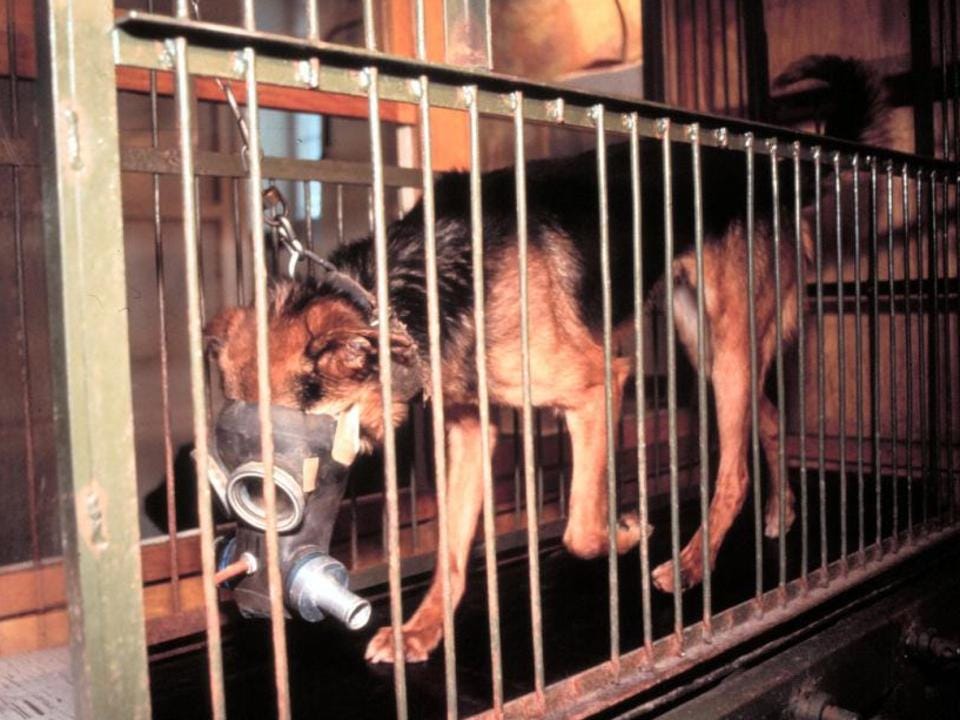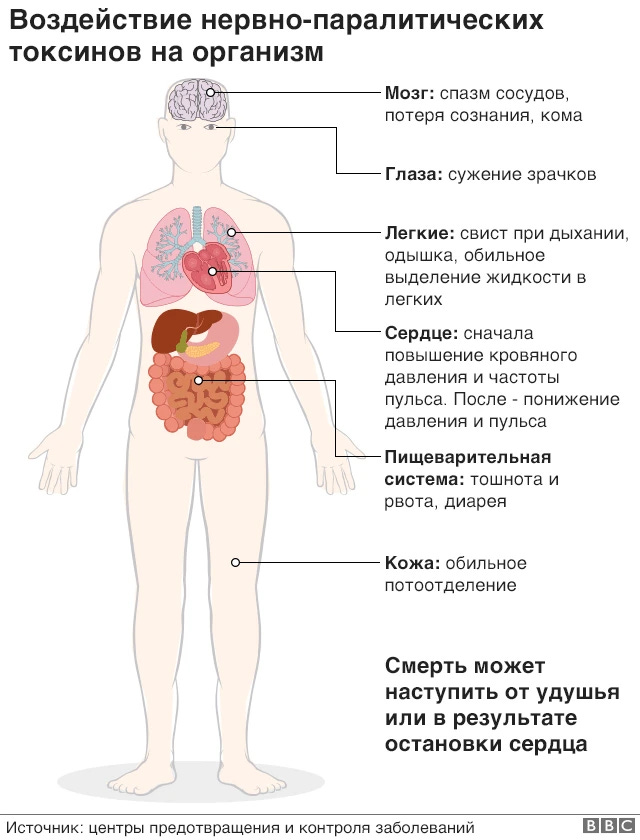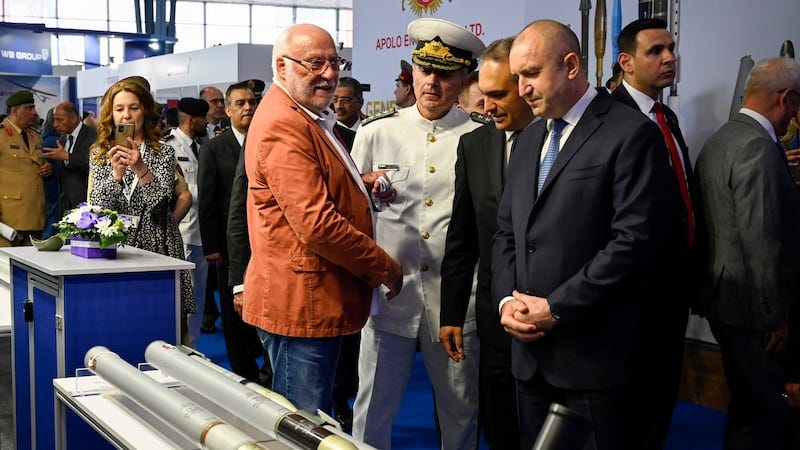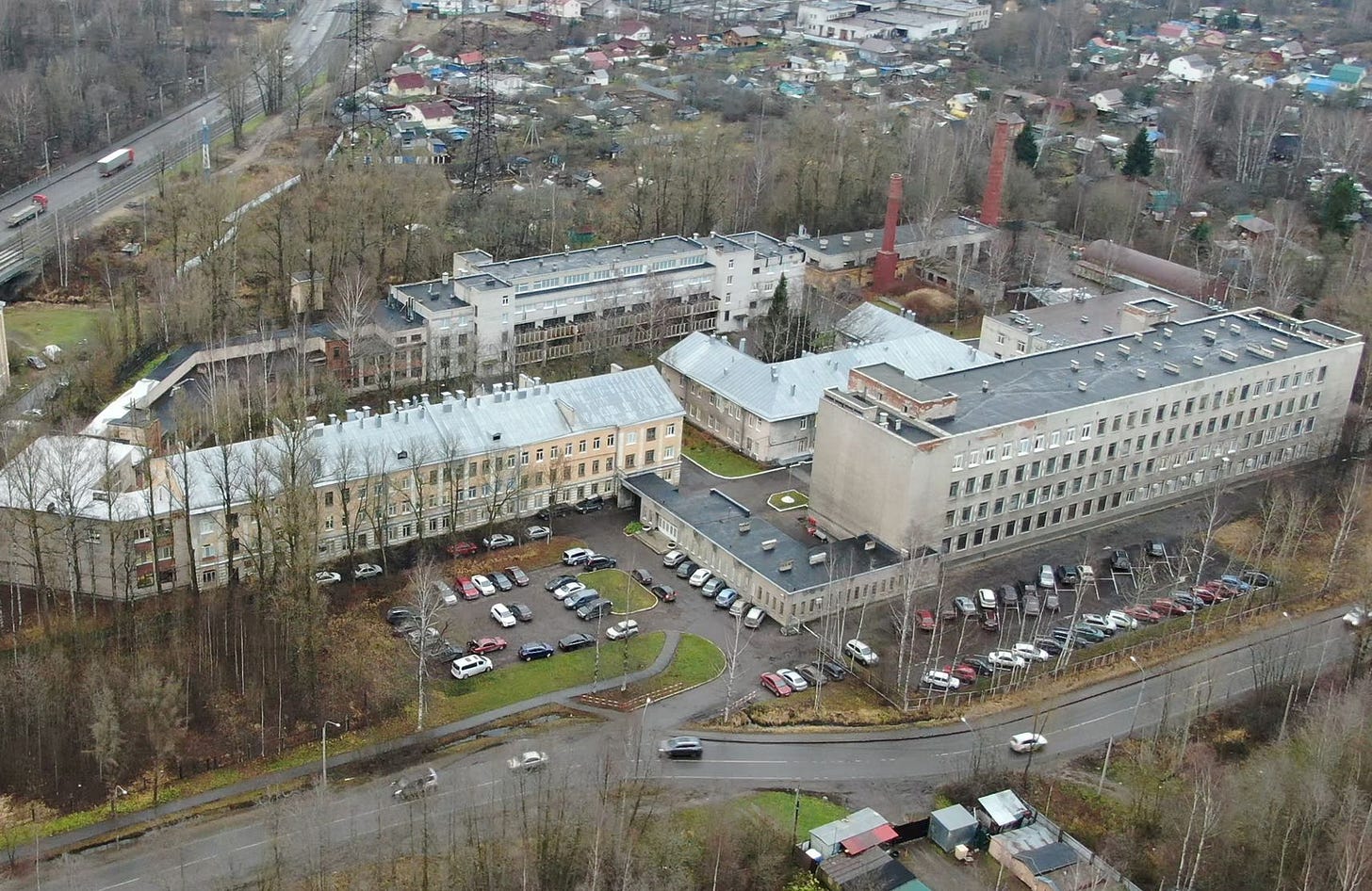Executive Summary
Novichok agents represent a fourth-generation chemical weapons system developed clandestinely by the Soviet Union and later Russia (1971–1993) under the FOLIANT program. Designed to evade international arms control regimes, these organophosphate nerve agents exhibit extreme lethality (5–10× more potent than VX), versatile delivery mechanisms (liquid, aerosol, ultrafine powder), and binary formulations that circumvent precursor monitoring. Their confirmed use in assassinations (e.g., Skripals 2018, Navalny 2020) underscores persistent Russian non-compliance with the Chemical Weapons Convention (CWC). This brief details technical specifications, historical development, deployment cases, and countermeasure challenges.
Geopolitical Theater: Novichok poisonings serve as psychological warfare, intimidating opponents and deterring critics. Targeting high-profile figures like Skripal and Navalny with a hard-to-detect substance sends a message of Russia's reach and capability, instilling fear and uncertainty. The public nature and media attention amplify this impact, aiming to silence dissent and project power. Long-term trauma for victims, families, and responders, plus international tensions, contribute to a broader atmosphere of insecurity, making these operations strategic tools for manipulation.
Bioweapons Research: Russia has not terminated its chemical weapons program, but has instead disguised its development capability behind a network of state-run institutes. Following the official closure of Russia’s military-run chemical weapons program in 2010, its core scientists were rehired by institutes which engage in ostensibly civilian research. In reality, these scientists continued to provide chemical weapons development and manufacturing support to Russia’s security services, including GNII VM (St Petersburg) and SC Signal (Moscow).
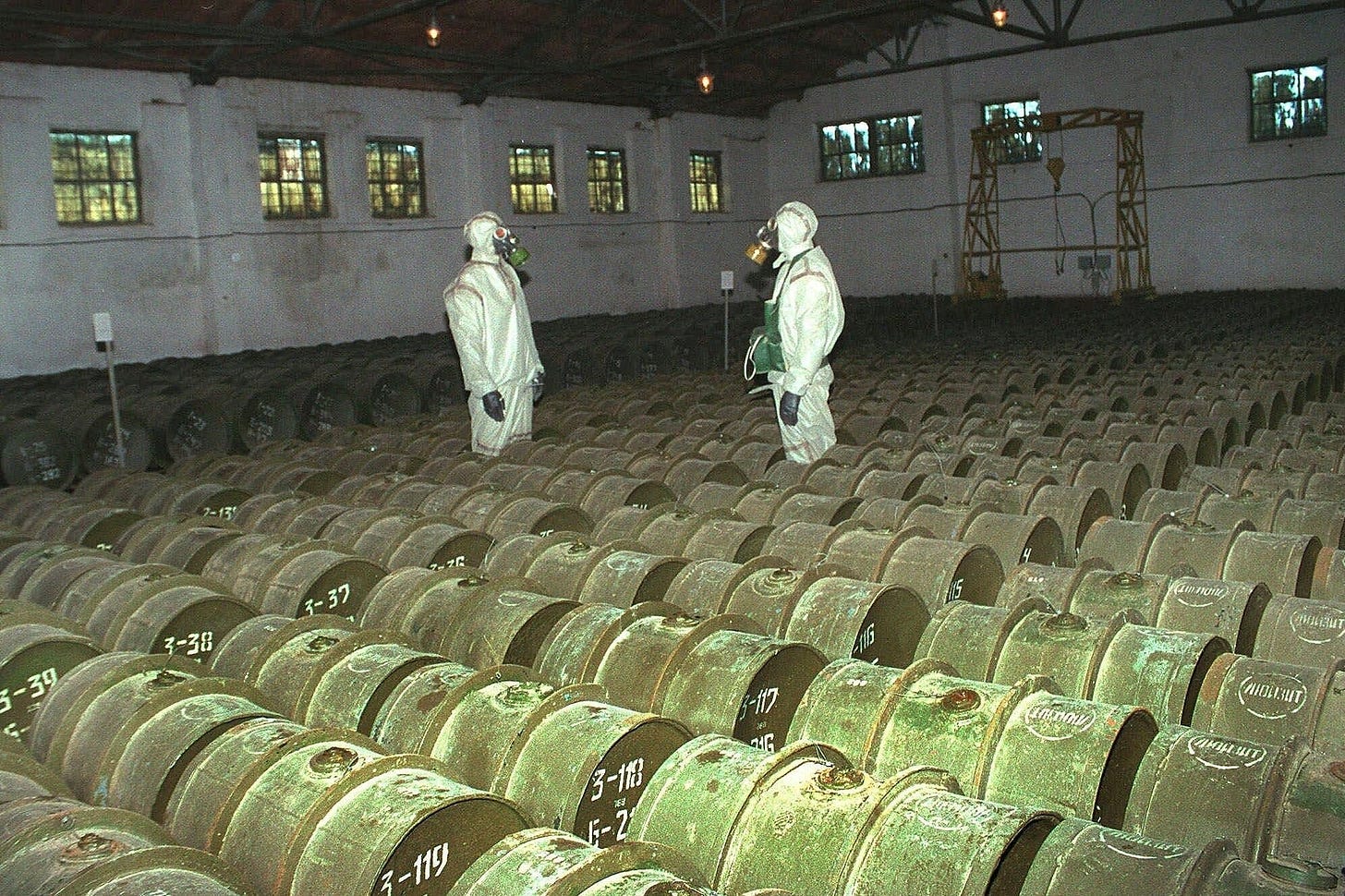
1. Historical Context & Development
German Precedents (1936-1945):
Gerhard Schrader's synthesis of Tabun (GA, 1936) for IG Farben established organophosphate nerve agents. Subsequent development of Sarin (GB, 1938) and Soman (GD, 1944) demonstrated progressive increases in toxicity and tactical potential. Scaled industrial production (>12,000 tons Tabun) at Dyhernfurth proved feasibility. Schrader's discovery of Tabun occurred while researching organophosphate insecticides for IG Farben, highlighting the dual use nature of organophosphate research.
`Parathion (CAS 56-38-2) is a very dangerous pesticide developed by Gerhard. The toxicity of Parathion through skin absorption is high enough that in the 1970s it was deliberately used by Rhodesian forces to poison insurgents by contaminating the crotch and armpits of items of clothing.
Sulfotep (CAS 3689-24-5) is a pesticide developed after the Second World War by Bayer, based on the original nerve agent research done by I. G. Farben
Tetraethylpyrophosphate/TEPP (CAS 107-49-3): Gerhard Schrader worked on it in the 1930s while conducting the research that led to the development of the military nerve agents.
Post-WWII Exploitation & Escalation (1945-1970): The Western Allies (especially the UK) were aware of German nerve agent research by 1944/45. The capture of the Dyhernfurth plant (intact, by the Soviets) and Schrader's team (by the British) were pivotal events. This provided the USSR with not just Tabun stocks, but the entire industrial production technology and experienced German engineers/scientists, significantly accelerating their program. "Works No. 91" was essentially a replica.
U.S. (Operation Paperclip): Leveraged German expertise (e.g., Edgewood Arsenal testing) but focused primarily on existing G-series agents for stockpiling. Needless to say US developed its own active binary nerve agent program (e.g., Bigeye bomb for VX binary, M687 artillery shell for Sarin binary) during the Cold War.
US Fort Detrick was the center of the U.S. biological weapons program from 1943 to 1969. Acquired Nazi nerve agent expertise (e.g., sarin, tabun) via Operation Paperclip and tested agents like VX at Edgewood Arsenal
UK Porton Down In the early 1950s, British scientists at, notably Ranajit Ghosh, developed Amiton (VG), a potent organophosphate intended as a pesticide. The development of VG led to VX, a more stable, deadly, low volatility and high persistence nerve agent in 1952. However, full development and large-scale production of VX occurred in the US (at Newport Chemical Depot, Indiana) based on the UK research. The UK later produced its own variant (VX Gas). Stockpiled VX but publicly destroyed stocks under the Chemical Weapons Convention (CWC)
French Program: France developed its own V-series agent, VR (RVx), distinct from Substance 33/VR, during the Cold War.
Chinese VX (CVX),, also known as EA-6043, an organophosphate nerve agent of the V-series. It is a structural isomer of both VX and Russian VX
Soviet Strategic Investment:
Reconstructed Chemical Works No. 91 (1948) initiated Soviet Tabun production (codenamed "Trilon-83/Substance 83").
Institutionalization of Toxins: The "Special Office" (1921) and Laboratory No. 1 (1939-1953) under Grigory Mairanovsky systematized state-sponsored toxicological research for assassination, providing a covert operational template.
Substance 33 Binary (VR analog) also known as VR or Russian VX, was a unitary nerve agent developed by the Soviet Union before FOLIANT. It was a Soviet analogue of VX, distinct from the later A-series agents. And while not itself a binary agent and not formally a prototype for the Novichok series it laid the foundation for future research.
Cold War Imperative: NATO's growing CW capability and detection systems (late 1960s) created a perceived strategic vulnerability, driving the USSR to seek a decisive technological edge.
1.2 The FOLIANT Program (1971-1993): Strategic Objectives & Execution
Core Strategic Drivers:
Undetectability: Evade NATO chemical detection equipment (specifically designed for G/V-series agents).
Penetration: Defeat evolving NATO protective gear (filters, suits).
Safety & Deniability:
Andrei Zheleznyakov (1987): GosNIIOKhT scientist severely injured in a lab accident synthesizing Novichok (A-232), suffering permanent disabilities; his case provided early evidence to the West.
Utilize binary precursors for safer handling, transport, and storage.
Employ novel chemical structures and precursors outside CWC watchlists (future-proofing).
Organophosphate poisoning can be misattributed to foodborne illnesses due to overlapping symptoms and the ubiquity of organophosphate compounds in agriculture; Plausibly denied as “arugula food poisoning” or “drug overdose”
Program Structure & Key Sites:
GosNIIOKhT (Moscow/Shikhany): Primary R&D hub under Pyotr Kirpichev (c. 1973). Responsible for novel agent design, synthesis (e.g., A-series: A-230, A-232, A-234), and binary weaponization.
Nukus Chemical Research Institute (Uzbek SSR, Operational c. 1986-1989): Pilot-scale production, weaponization testing (munitions filling), and open-air testing. Demolished (1999-2002) under U.S.-funded Cooperative Threat Reduction (CTR).
Pavlodar Chemical Plant (Kazakh SSR): constructed in the 1980s for synthesising primary Novichok precursors (chloroformoxime derivatives). Preemptively demolished (1987) to obscure treaty violations pre-CWC signature.
Other sites: Volgograd (formerly Stalingrad) and Stepnogorsk (Kazakh SSR, primarily bioweapons but some CW overlap).
Key Technological Achievements (Per Defectors):
Synthesis of A-230, A-232, A-234 ("Novichok-5", "Novichok-7") - significantly more lethal than VX, persistent, and designed for binary deployment.
Testing of 100+ novel organophosphate structures, with at least 4 weaponized variants confirmed.
Development of specialized dispersion methods and munitions.
1.3 Defection, Disclosure & Disinformation
Whistleblower (1992): Vil Mirzayanov (GosNIIOKhT Counterintelligence), citing environmental contamination risks, publicly exposed FOLIANT's weaponization of Novichok agents. His arrest (treason) and subsequent release highlighted internal dissent and program illegality under nascent Russian commitments. Mirzayanov's primary concern was massive, uncontrolled environmental contamination from testing and sloppy production at Shikhany and Nukus, poisoning workers and nearby populations, which constituted an illegal open-air test under Soviet law.
Scientist Defections: Vladimir Uglev (synthesized A-232) and others provided technical corroboration on agent properties, synthesis pathways, and weaponization status, validating Mirzayanov's claims.
Operation SHOCKER (1959-1981): FBI double agent "TOP HAT" fed USSR fabricated data on a fictitious, unstable nerve agent ("GJ"). Analytical Assessment: This disinformation likely consumed significant Soviet resources attempting replication, potentially reinforcing their focus on novel, verifiably effective binaries like Novichok to overcome perceived Western advances.
The Chemical Weapons Convention (CWC): Entered into force in 1997. Russia declared and destroyed its declared stockpiles (primarily G-series, VX, and mustard agents). Crucially, the Novichok agents and the FOLIANT program were never declared by Russia, constituting a major treaty violation.
2. Technical Specifications of Novichok Agents
Novichok agents ("newcomer" in Russian) represent the fourth generation of organophosphorus nerve agents, developed clandestinely by the Soviet Union under the Foliant program (1971–1993). Phosphoramidate backbone with a dihaloformaldoxime moiety (e.g., A-234: ethyl N-[(1E)-1-(diethylamino)ethylidene]-phosphoramidofluoridate)411. They are classified into two categories:
Binary Agents: mixed before deployment (e.g., Novichok-5, Novichok-7), where inert components react to form active toxins. Precursors (e.g., acetonitrile + organophosphate) appear as industrial chemicals.
Unitary Agents: Directly weaponized forms (e.g., A-230, A-232, A-234).
2.1 Nerve Agent Taxonomy
A-230 Unitary liquid or powder – 5–8×VX potency – stable for days to weeks
A-232 Unitary liquid Similar to VX potency – stable for weeks – Binary: Novichok-5
A-234 Unitary liquid 5–8×VX potency – stable for months – Binary: Novichok-7
2.2 Key Properties
Lethality:
*A-230*: LD₅₀ (inhalation) = 0.1 mg; 10,000 doses/gram 29.
*A-234*: LD₅₀ (inhalation) = 0.2 mg; persists in environment for months 8.
Delivery Systems:
Delivery Flexibility: Artillery shells, missiles, sprayers, gel, ultrafine powder (Novichok-7) adheres to surfaces; secondary exposure risk (e.g., Amesbury 2018).
Nano-encapsulation; a relatively new technology that could permit a lethal toxin to be “packaged” within a veneer of another substance, allowing both obfuscation and delayed onset of the poison.
Symptom Latency
Novichok can inhibits 75–80% of AChE before symptom onset, enabling covert poisoning.
Pesticides
A great number of organic phosphorus compounds which attack the human nervous system in ways similar to Novichok include, Chlorethoxyphos (CAS 54593-83-8), Chlorpyrifos (CAS 2921-88-2), Coumaphos (CAS 56-72-4), Diazinon (CAS 333-41-5), Disulfoton (CAS 298-04-4), Ethion (CAS 563-12-2), Phorate (CAS 298-08-2)
2.3 Mechanism of Action
Primary Action: Irreversible inhibition of acetylcholinesterase (AChE), causing : Irreversible phosphorylation, acetylcholine accumulation and neuromuscular paralysis. This triggers a cholinergic crisis:
Muscarinic effects: Bronchoconstriction, bradycardia, salivation.
Nicotinic effects: Muscle fasciculations, paralysis.
CNS effects: Seizures, respiratory depression
Secondary Action: Direct neurotoxic binding to peripheral sensory neurons, inducing delayed organophosphate-induced delayed polyneuropathy (OPIDP). Symptoms include permanent ataxia and muscle weakness, even with sublethal exposure.
Unique Neurotoxicity: Targets peripheral sensory neurons; high-dose exposure causes debilitating neuropathy.
Novichok Deployments
1. Ivan Kivelidi (1995)
Date: August 1995
Victims: Ivan Kivelidi (Russian banker and head of the Russian Business Round Table), Zara Ismailova (his secretary), and secondary poisoning of first responders and medical personnel.
Novichok Type: Unspecified Novichok agent (reported as a highly toxic organophosphate nerve agent).
Method of Delivery: The poison was applied to the telephone receiver in Kivelidi’s office in Moscow. Exposure occurred through skin contact and inhalation when Kivelidi and Ismailova used the phone. The agent’s persistence on the surface led to secondary contamination.
Perpetrators: Allegedly orchestrated by Russian security services (FSB). Vladimir Khutsishvili, Kivelidi’s business partner, was convicted but widely believed to have been framed. Leonid Rink, a GosNIIOKhT employee involved in Novichok development, was implicated in supplying the agent, possibly via intermediaries linked to Chechen buyers or state actors.
Motivation: Ivan Kivelidi, head of the Russian Business Round Table and prominent banker advocating for financial transparency and reduced FSB influence in private enterprise. Kivelidi had been gathering evidence of high-level corruption involving FSB-linked networks and was preparing testimony regarding security service ties to organized crime in the post-Soviet banking system. The assassination occurred during a period of FSB consolidation under Yeltsin and coincided with multiple unexplained deaths among reform-oriented businessmen, suggesting the operation served dual purposes: eliminating a direct threat to FSB interests and signaling broader warnings to reformist factions including Prime Minister Chernomyrdin's circle. The case remains officially unresolved despite clear attribution indicators.
Outcome: Kivelidi died three days after exposure at age 46. Ismailova developed symptoms one month later and died one day after hospitalization at age 35. First responders and the coroner examining Kivelidi’s body experienced poisoning symptoms due to secondary exposure, though none are reported to have died.
TTPs:
Targeted assassination via contamination of a frequently used personal item (telephone receiver).
Use of a persistent contact poison for precision targeting.
Secondary contamination of individuals interacting with victims or the crime scene, indicating the agent’s environmental stability.
Framing of a civilian suspect (Khutsishvili) to deflect blame from state actors.
Possible use of intermediaries to obscure the source of the agent.
Operational Pattern Notes: This incident marks an early use of Novichok for assassination, targeting a prominent figure with ties to Russian political elites (e.g., Viktor Chernomyrdin). The secondary poisoning suggests a lack of regard for collateral damage and limited awareness of the agent’s persistence at the time.
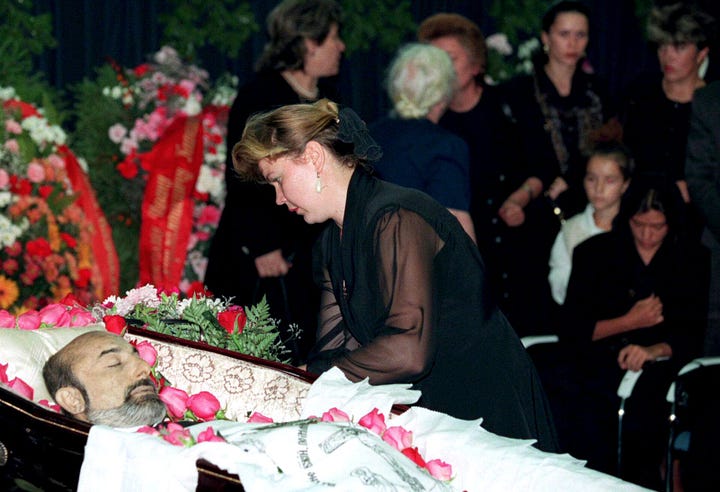
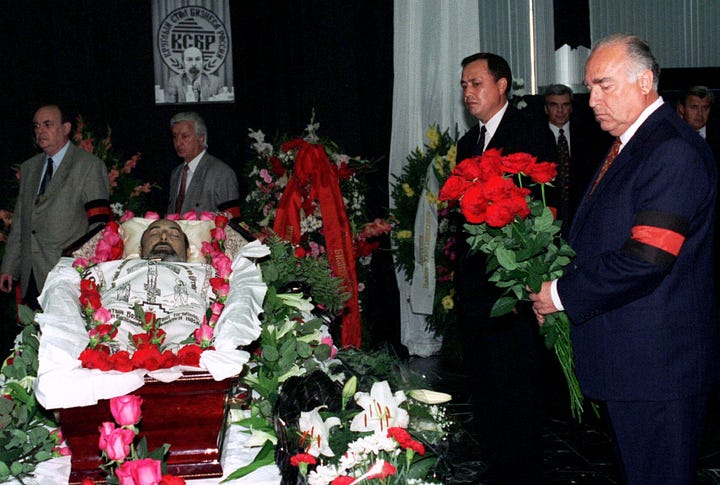
2. Sergei Skripal (2018) - FSB/GRU
Date: March 4, 2018
Victims: Sergei Viktorovich Skripal (DOB: June 23, 1951; former GRU colonel and MI6 double agent), Yulia Sergeyevna Skripal (DOB: 1984; his daughter), and Detective Sergeant Nick Bailey (first responder).
Novichok Type: A-234 (confirmed by the Organisation for the Prohibition of Chemical Weapons - OPCW).
Method of Delivery: The nerve agent was applied to the door handle of Skripal’s residence in Salisbury, Wiltshire, United Kingdom. Exposure occurred through skin contact when the victims touched the contaminated surface. The application likely took place hours before the victims’ exposure, given the agent’s persistence. At approximately 16:15 GMT, Sergei and Yulia were found unconscious on a public bench in Salisbury city center, exhibiting symptoms of nerve agent poisoning (e.g., vomiting, disorientation, and convulsions).
Perpetrators: Russian GRU operatives Anatoliy Chepiga (alias Ruslan Boshirov) and Alexander Mishkin (alias Alexander Petrov), with coordination by Denis Sergeev (alias Sergey Fedotov), a senior GRU officer linked to Unit 29155. The operatives entered the UK on March 2, 2018, conducted reconnaissance, and departed on March 4, 2018, shortly after the attack.
Outcome: Sergei and Yulia Skripal were hospitalized in critical condition but survived after intensive medical treatment. DS Bailey was exposed during the investigation (likely via contact with the door handle) and also recovered after hospitalization. The incident triggered a major public health response, international condemnation, and sanctions against Russia.
TTPs:
Targeted assassination attempt using a military-grade nerve agent.
Covert application of a persistent contact poison to a personal residence (door handle).
Use of aliases and covert travel (e.g., commercial flights under false identities).
Coordination by a senior operative from a remote location (Sergeev in London).
Public denial and disinformation campaign by Russian authorities, including claims of UK fabrication.
Operational Pattern Notes: This sophisticated operation demonstrates precise targeting of a high-value defector, executed by a specialized GRU unit. The use of a door handle reflects an evolution toward contaminating personal property, ensuring direct exposure while minimizing detection. The involvement of multiple operatives and a disinformation campaign highlights a focus on operational security and deniability.
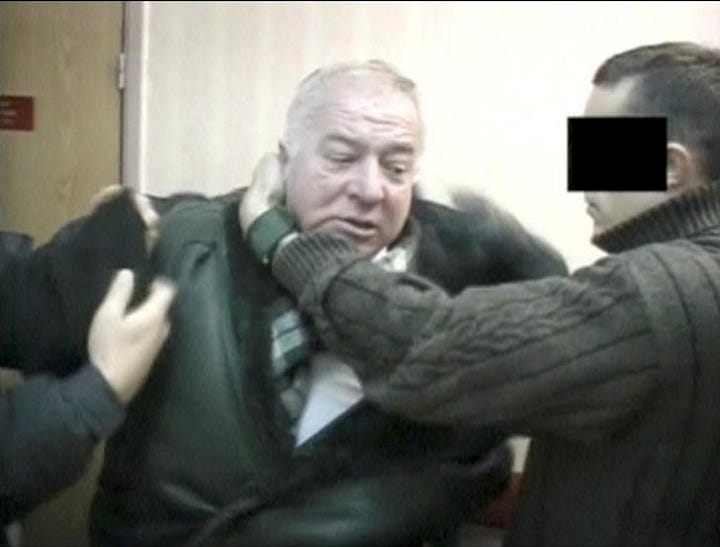
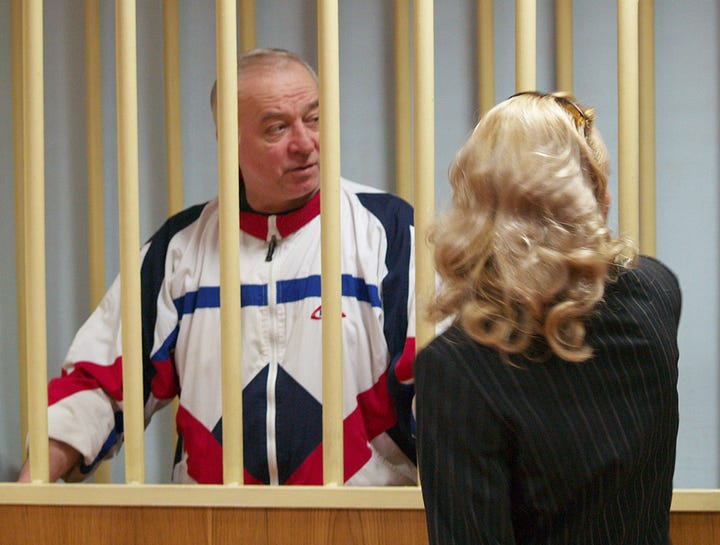
3. Amesbury Poisonings (2018)
Date: June 30, 2018
Victims: Dawn Sturgess (deceased) and Charlie Rowley (survived).
Novichok Type: A-234 (same batch as in the Skripal case, confirmed by forensic analysis; 13 km away, almost four months prior).
Method of Delivery: Exposure occurred via a discarded perfume bottle containing Novichok, found by Rowley in a public place in Amesbury, UK (approximately 10 miles from Salisbury). Sturgess sprayed the contents onto her wrists, resulting in direct skin exposure to a lethal dose. The bottle, later recovered, contained enough Novichok to kill thousands, indicating a significant quantity remained from the Skripal operation.
Perpetrators: Indirectly linked to the Skripal attack by Russian GRU operatives (Chepiga, Mishkin, and Sergeev), who discarded the container after the March 4 operation.
Outcome: Sturgess died eight days later on July 8, 2018, after entering a coma. Rowley survived but suffered long-term health effects, including neurological damage. The incident prompted a public inquiry, with hearings scheduled for October 2025 in Salisbury and London.
TTPs:
Collateral damage from improper disposal of a chemical weapon.
Use of an innocuous item (perfume bottle) to conceal the nerve agent, enhancing its portability and disguising its nature.
Lack of operational security in discarding the container, leading to unintended victims months after the primary operation.
Operational Pattern Notes: This case reveals a critical failure in the Skripal operation’s aftermath, with the discarded Novichok remaining active and accessible. The perfume bottle’s capacity underscores the operatives’ recklessness and the agent’s environmental persistence, posing ongoing risks to public safety.
4. Emilian Gebrev (2015) - FSB
Date: April 2015
Victims: Emilian Gebrev (Bulgarian arms dealer), Hristo Gebrev (his son), and a company executive.
Novichok Type: Suspected Novichok A-234 (exact type unspecified; identified as an organophosphate via subsequent analyses).
Method of Delivery: Likely applied to car door handles or other frequently
touched surfaces in Sofia, Bulgaria. Exposure occurred through skin contact, with symptoms emerging during or after a business dinner attended by the victims. Initial investigations were inconclusive, but later forensic work linked the symptoms to Novichok exposure.
Perpetrators: Linked to GRU operatives, including Denis Sergeev (alias Sergey Fedotov), who was also involved in the Skripal case. Sergeev traveled to Bulgaria during the incident, with two other suspected GRU agents also identified in investigative reports.
Outcome: All three victims were hospitalized with symptoms consistent with nerve agent poisoning (e.g., nausea, disorientation, and muscle weakness) but survived after treatment. The case gained renewed attention post-Skripal, leading to further investigation by Bulgarian and international authorities.
TTPs:
Targeted assassination attempt using a contact poison.
Covert application to frequently touched surfaces (likely car door handles), mirroring later Skripal tactics.
Use of a recurring operative (Sergeev), indicating a consistent GRU team for Novichok operations.
Possible motive tied to Gebrev’s arms exports to Ukraine, conflicting with Russian interests.
Operational Pattern Notes: This case targets an individual with geopolitical significance, suggesting a pattern of eliminating threats to Russian foreign policy. The use of contact poison on car door handles prefigures the Skripal method, indicating a developing playbook within GRU Unit 29155.
5. Alexei Navalny (2020) - FSB
Date: August 20, 2020
Victim: Alexei Navalny, Russian opposition leader and anti-corruption activist.
Novichok Type: Unspecified Novichok agent (confirmed by multiple OPCW-certified laboratories in Germany, France, and Sweden).
Method of Delivery: Likely applied to Navalny’s personal items, specifically his underwear, while he was staying at the Xander Hotel in Tomsk, Russia. Exposure occurred through skin contact, with symptoms emerging during a flight from Tomsk to Moscow. Investigations by Bellingcat and partners suggest FSB operatives accessed his hotel room to contaminate the item.
Perpetrators: Attributed to a special unit within the FSB specializing in chemical substances, with potential collaboration or overlap with GRU Unit 29155. Key operatives included members tracked via phone records and travel data, shadowing Navalny for months prior to establish pattern of life.
Outcome: Navalny fell critically ill mid-flight, forcing an emergency landing in Omsk. He was initially treated in Russia, then evacuated to Berlin’s Charité Hospital, where he recovered after weeks in a coma. The incident led to international sanctions and heightened scrutiny of Russian chemical weapons use.
TTPs:
Targeted assassination attempt using a contact poison applied to intimate personal belongings.
Covert access to the victim’s private space (hotel room) for contamination.
Use of a highly toxic agent to ensure lethality while maintaining deniability.
Extensive surveillance of the target prior to the attack.
Public denial and disinformation by Russian authorities, claiming natural illness or foreign staging.
Operational Pattern Notes: This domestic operation expands Novichok’s use to political dissidents within Russia, contrasting with prior international targets. The underwear contamination reflects an intimate, high-risk delivery method, suggesting confidence in operational secrecy. The FSB’s involvement, distinct from the GRU, indicates task allocation based on target location or profile.



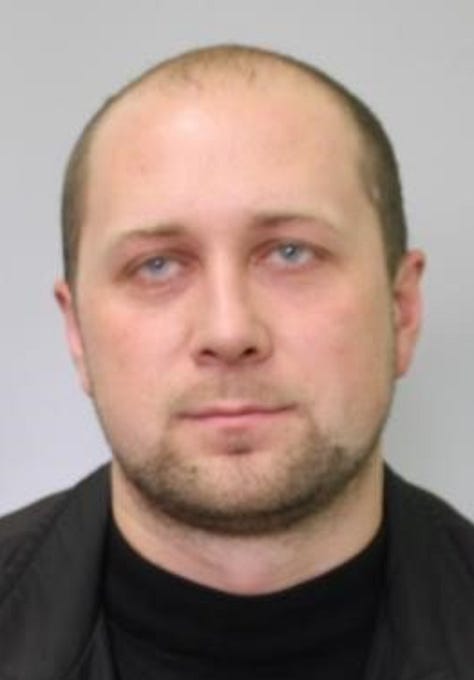





OPERATIONAL PATTERNS: A COMPARATIVE ANALYSIS
I. Command Structure and Personnel
A. GRU Unit 29155 (International Sabotage & Assassination)
Mission: Covert operations abroad (assassinations, sabotage, destabilization).
Base: 161st Special Purpose Specialist Training Center, Moscow.
Leadership:
Maj. Gen. Andrei Averyanov: Unit Commander. Linked to Vrbětice (2014), Skripal (2018), and broader European sabotage.
Maj. Gen. Vladimir Alexseyev: Deputy Commander. Key coordinator for Unit 29155 operations, including Vrbětice.
Maj. Gen. Denis Sergeev (alias "Sergei Fedotov"): Senior operations coordinator. Commanded Skripal poisoning from London; implicated in Bulgaria (2015) and Navalny (2020) operations.
Key Operatives:
Col. Anatoliy Chepiga (alias "Ruslan Boshirov"): "Hero of Russia." Directly executed Skripal poisoning (2018); Vrbětice (2014).
Dr. Alexander Mishkin (alias "Alexander Petrov"): GRU medical officer. Skripal poisoning (2018); Vrbětice (2014).
Col. Oleg Ivannikov (alias "Orion"): Key coordinator for downing of MH17 (2014).
Nikolay Yezhov (alias "Alexey Kalinin"): Vrbětice (2014).
Egor Gordienko (alias "Georgy Gorshkov"): Vrbětice (2014).
Ivan Terentiev: Vrbětice (2014).
Andrey Oreshkin: MH17 (2014) logistics/planning.
Olga Kolobova (alias "Maria Adela Kuhfeldt Rivera"): NATO infiltration (Italy).
Oversight:
Gen. Sergei Pavlov: Head of GRU Department "X" (Active Measures), overseeing Unit 29155. Expelled from Netherlands (2018) for OPCW hacking attempt.
B. FSB Unit 34435 / Criminalistics Institute (NII-2) (Domestic Poisoning & Surveillance)
Mission: Domestic suppression, assassination of dissidents, chemical weapons deployment.
Base: Akademika Vargi Street 2, Moscow (primary); Mytishchi compound (training/storage).
Leadership & Oversight:
Gen. Alexander Bortnikov: Director, FSB (Ultimate responsibility).
Gen. Sergei Korolev: First Deputy Director, FSB; Head of Counterintelligence Service (oversees Unit 2 & Criminalistics Institute).
Gen. Vladimir Bogdanov: Head, FSB Criminalistics Institute (Unit 34435). Oversees chemical weapons programs.
Gen. Kirill Vasilyev: Deputy Head, FSB Criminalistics Institute. Oversees chemical weapons programs.
Col. Stanislav Makshakov: Direct commander of Navalny poisoning team; scientist from Shikhany (Novichok development).
Navalny Poisoning Team (Sub-Unit of 34435):
Alexander Samofal: Head of surveillance team tracking Navalny.
Medical Specialists: Ivan Osipov (alias "Ivan Spiridonov"), Alexey Alexandrov. Shadowed Navalny on >30 flights.
Surveillance & Logistics: Vladimir Panyaev, Ivan Dedov, Alexey Krylov, Mikhail Shvets, Pavel Vasiliev, Roman Matyushin, Alexey Frolov, Dmitry Sukhanov, Alexey Zhalo, Alexey Sedov, Konstantin Manin, Oleg Tayakin, Valery Sukharev, Aleksey Kapinos, Sergei Kireev.
Confirmation/Technical: Konstantin Kudryavtsev (confirmed operation details to Navalny).

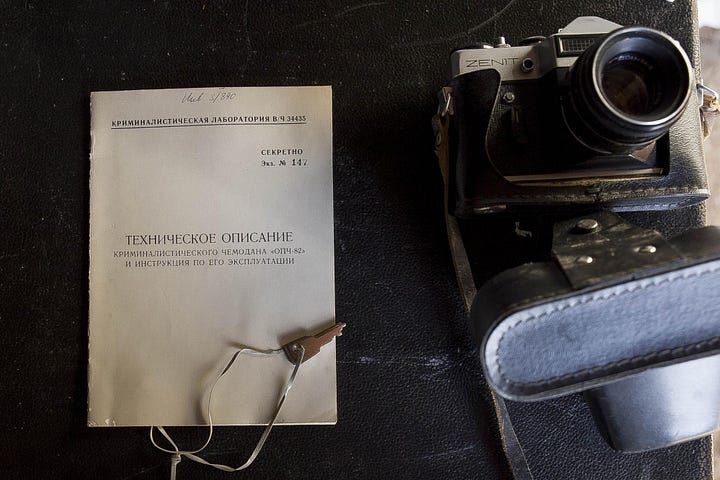
Soviet-era forensic tools suitcase with a top-secret instruction book showing Unit 34435 as its owner, issue 1982.
II. Persistent Operatives & Cross-Unit Coordination
Denis Sergeev (GRU): Demonstrated operational continuity across:
Skripal (2018): Commanded from London.
Emonil Gebrev (Bulgaria, 2015): Orchestrated 8-agent poisoning team.
Navalny (2020): Intelligence coordination role suggests liaison with FSB Unit 34435.
Chemical Weapons Expertise:
GRU: Mishkin (medical), Ivannikov (field ops coordination near chemical incidents - MH17).
FSB: Unit 34435 derives direct lineage to Soviet-era poison lab (Akademika Vargi). Makshakov (Shikhany background), Bogdanov/Vasilyev (institute oversight), Osipov/Alexandrov (medical deployment).
Tactics, Techniques & Procedures (TTPs):
Surveillance: FSB Unit 34435 conducted intensive, multi-agent surveillance of Navalny (>30 flights). GRU uses shorter-term, mission-specific surveillance (Skripal, Gebrev).
Pre-Attack Intel: Yulia Skripal’s emails monitored since 2013; Navalny tracked for months.
Travel Patterns: Operatives used sequential passports and staggered travel (e.g., Gebrev operation involved 8 agents across 4 trips).
Deep Cover: Both utilize deep non-official cover (NOC) with sophisticated legends including real personal details (common practise, to increase believability) and accompanying documentation (Chepiga/Boshirov, Kolobova/Rivera). FSB medics used official-looking but false medical credentials.
Framing Civilians: Kivelidi’s partner convicted to obscure state involvement.
Command & Control: GRU favors senior officers (Sergeev, Ivannikov) deployed near target zones for direct control. FSB Unit 34435 operated under strict Moscow-based hierarchy (Bogdanov/Vasilyev -> Makshakov -> Samofal) with field teams.
Sloppy Tradecraft: Agents left digital trails – this is likely incompetence and not deliberate to facilitate attribution and induce fear - however, the effect is the same.
Improper Disposal: Discarded Novichok in Amesbury caused Sturgess’ death
OPSEC Failures: Chepiga photographed at Averyanov’s wedding), registration of field agents at official GRU headquarters (Khoroshovskoye Shosse 76B)
Delivery Methods:
Environmental Contamination: Novichok applied to high-touch surfaces (e.g., Skripal’s door handle, Kivelidi’s telephone) for targeted exposure 19.
Disguised Containers: Aerosolizes via perfume bottles (Skripal/Amesbury) and underwear (Navalny) enabled covert transport.
Post-Op Actions: GRU agents exfiltrated rapidly post-Skripal. FSB conducted extensive post-poisoning clean-up operations (Kudryavtsev's role).
Exfiltration: Immediate departure post-operation (e.g., Skripal assassins flew to Moscow 4 hours after attack)
III. Target Selection: Strategic Elimination
Targets are selected based on perceived high-level threats to Russian state interests and personal vendettas likely approved at the highest levels (FSB/GRU leadership reporting to Presidential Administration):
Defectors: Sergei Skripal (GRU defector). Rationale: Eliminate sources of intelligence, deter future defections, enforce vengeance.
Dissidents: Alexei Navalny. Rationale: Eliminate charismatic opposition leader challenging regime stability and exposing corruption.
Disrupters: Emonil Gebrev: Bulgarian arms dealer supplying Ukraine. Rationale: Disrupt arms flow to adversary.
Using high profile shock and awe as a foreign policy tool to discourage dissent and instil fear in future and current adversaries.
Detection, Treatment & Countermeasures
Detection Challenges
NATO Equipment Evasion: Undetectable by 1970s–80s field kits; requires GC-MS/LC-MS lab analysis.
Environmental Persistence: Solid agents resist degradation; contaminate sites for years (e.g., Skripal’s house).
Medical Countermeasures
The development of pralidoxime (2-PAM) and other oxime reactivators in the 1950s/60s was a major countermeasure breakthrough against G/V-agents.
Immediate Treatment:
Atropine: High-dose IV (2–6 mg every 5–10 min) to block muscarinic effects.
Oximes: Pralidoxime (1–2 g IV) reactivates acetylcholinesterase; ineffective after "aging" (20 min for soman).
Anticonvulsants: Diazepam for seizure.
Prophylactic Measures
Biological Scavengers: Butyrylcholinesterase: Binds nerve agents in bloodstream; under DoD development.
Decontamination: Alkaline hydrolysis (e.g., 10% NaOH) degrades agents; avoid bleach (produces cyanide).
Conclusion
Unit 29155’s operations reflect a hybrid warfare strategy: deniable assassinations paired with diplomatic disruption. The Novichok program’s persistence—despite Russia’s CWC commitments—underscores its role as a geopolitical tool. Future threats will likely refine delivery methods to reduce collateral risks while maintaining psychological impact.
GRU Unit 29155 acts as the external security service – conductingassassinations abroad. FSB Unit 34435 acts as the internal security services – suppressing dissent with extreme prejudice using specialized chemical weapons. The persistence of key operatives and overlap in TTPs (pattern of life surveillance and nerve agent poisoning) indicate potential coordination or shared doctrine for high-priority "wet affairs," particularly against targets deemed traitorous or existentially threatening to the regime; silencing opposition, punishing defectors, and advancing geopolitical goals through deniable force.
Unified Modus Operandi:
All operations involved persistent Novichok application to personal items, minimizing direct contact. Unit 29155 reused operatives (Sergeev) and locations (Switzerland for planning).
State Coordination:
Awards (e.g., Chepiga’s Hero of Russia) and Kremlin denials indicate high-level approval. Putin praised GRU’s "unique abilities" in 2018 49.
Psychological Warfare:
"Sloppy" evidence (e.g., Boshirov’s public photos) signals that no opponent is safe, amplifying deterrence 17.




